第52章 HOOK AND ROOT-CLIMBERS.--CONCLUDING REMARKS(3)
From analogous reasons, it is probable that all tendril-bearers were primordially twiners, that is, are the descendants of plants having this power and habit.For the internodes of the majority revolve;and, in a few species, the flexible stem still retains the capacity of spirally twining round an upright stick.Tendril-bearers have undergone much more modification than leaf-climbers; hence it is not surprising that their supposed primordial habits of revolving and twining have been more frequently lost or modified than in the case of leaf-climbers.The three great tendril-bearing families in which this loss has occurred in the most marked manner, are the Cucurbitaceae, Passifloraceae, and Vitaceae.In the first, the internodes revolve; but I have heard of no twining form, with the exception (according to Palm, p.29.52) of Momordica balsamina, and this is only an imperfect twiner.In the two other families I can hear of no twiners; and the internodes rarely have the power of revolving, this power being confined to the tendrils.The internodes, however, of Passiflora gracilis have the power in a perfect manner, and those of the common Vine in an imperfect degree:
so that at least a trace of the supposed primordial habit has been retained by some members of all the larger tendril-bearing groups.
On the view here given, it may be asked, Why have the species which were aboriginally twiners been converted in so many groups into leaf-climbers or tendril-bearers? Of what advantage has this been to them? Why did they not remain simple twiners? We can see several reasons.It might be an advantage to a plant to acquire a thicker stem, with short internodes bearing many or large leaves; and such stems are ill fitted for twining.Any one who will look during windy weather at twining plants will see that they are easily blown from their support; not so with tendril-bearers or leaf-climbers, for they quickly and firmly grasp their support by a much more efficient kind of movement.In those plants which still twine, but at the same time possess tendrils or sensitive petioles, as some species of Bignonia, Clematis, and Tropaeolum, it can readily be observed how incomparably better they grasp an upright stick than do simple twiners.Tendrils, from possessing this power of grasping an object, can be made long and thin; so that little organic matter is expended in their development, and yet they sweep a wide circle in search of a support.
Tendril-bearers can, from their first growth, ascend along the outer branches of any neighbouring bush, and they are thus always fully exposed to the light; twiners, on the contrary, are best fitted to ascend bare stems, and generally have to start in the shade.Within tall and dense tropical forests, twining plants would probably succeed better than most kinds of tendril-bearers; but the majority of twiners, at least in our temperate regions, from the nature of their revolving movement, cannot ascend thick trunks, whereas this can be affected by tendril-bearers if the trunks are branched or bear twigs, and by some species if the bark is rugged.
The advantage gained by climbing is to reach the light and free air with as little expenditure of organic matter as possible; now, with twining plants, the stem is much longer than is absolutely necessary;for instance, I measured the stem of a kidney-bean, which had ascended exactly two feet in height, and it was three feet in length:
the stem of a pea, on the other hand, which had ascended to the same height by the aid of its tendrils, was but little longer than the height reached.That this saving of the stem is really an advantage to climbing plants, I infer from the species that still twine but are aided by clasping petioles or tendrils, generally making more open spires than those made by simple twiners.Moreover, the plants thus aided, after taking one or two turns in one direction, generally ascend for a space straight, and then reverse the direction of their spire.By this means they ascend to a considerably greater height, with the same length of stem, than would otherwise have been possible; and they do this with safety, as they secure themselves at intervals by their clasping petioles or tendrils.
We have seen that tendrils consist of various organs in a modified state, namely, leaves, flower-peduncles, branches, and perhaps stipules.With respect to leaves, the evidence of their modification is ample.In young plants of Bignonia the lower leaves often remain quite unchanged, whilst the upper ones have their terminal leaflets converted into perfect tendrils; in Eccremocarpus I have seen a single lateral branch of a tendril replaced by a perfect leaflet; in Vicia sativa, on the other hand, leaflets are sometimes replaced by tendril-branches; and many other such cases could be given.But he who believes in the slow modification of species will not be content simply to ascertain the homological nature of different kinds of tendrils; he will wish to learn, as far as is possible, by what actual steps leaves, flower-peduncles, &c., have had their functions wholly changed, and have come to serve merely as prehensile organs.
In the whole group of leaf-climbers abundant evidence has been given that an organ, still subserving the functions of a leaf, may become sensitive to a touch, and thus grasp an adjoining object.With several leaf-climbers the true leaves spontaneously revolve; and their petioles, after clasping a support grow thicker and stronger.